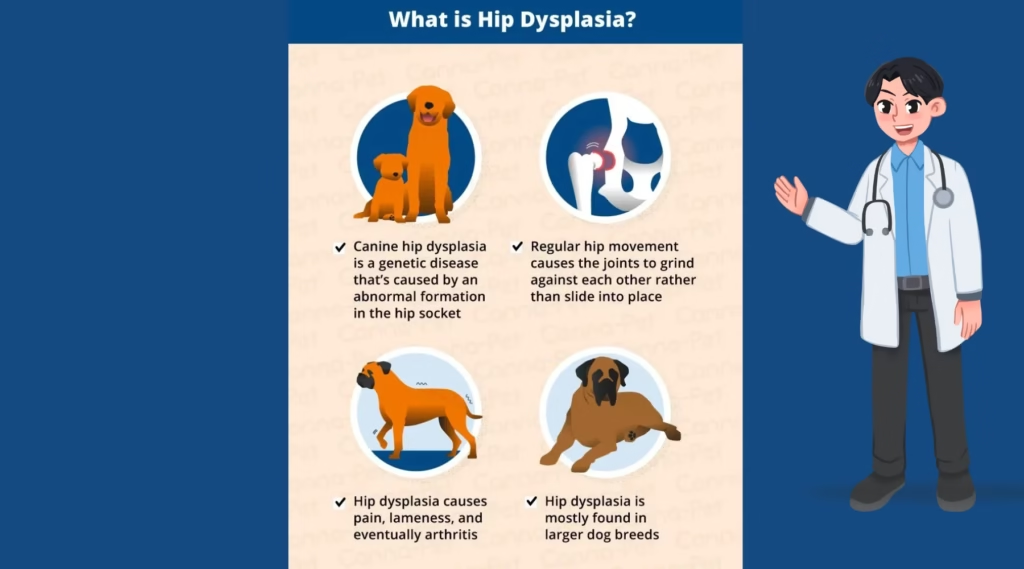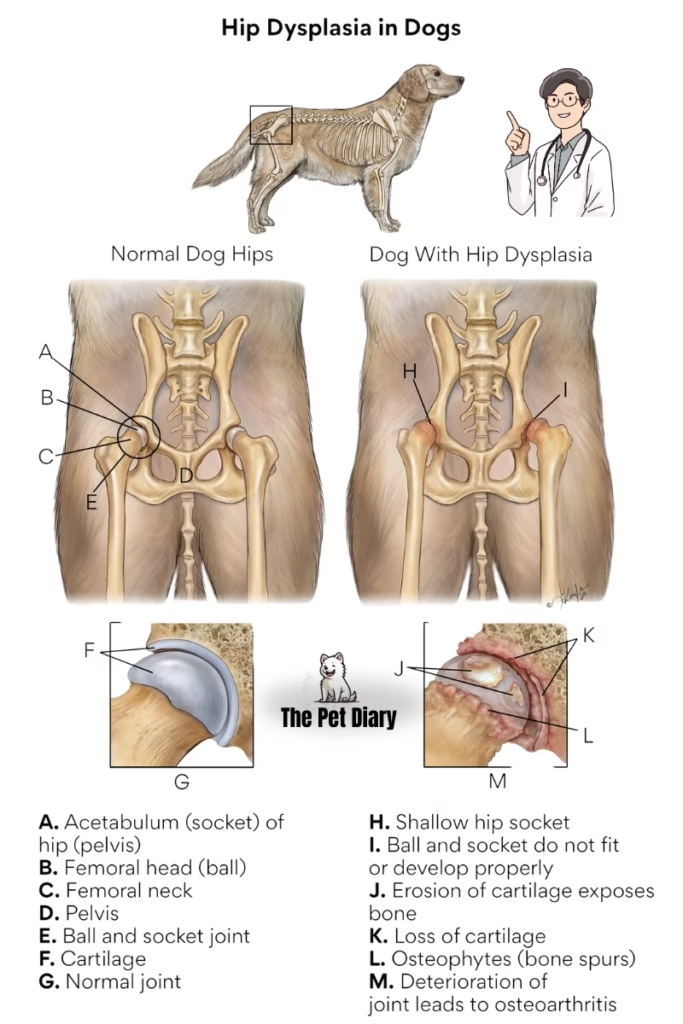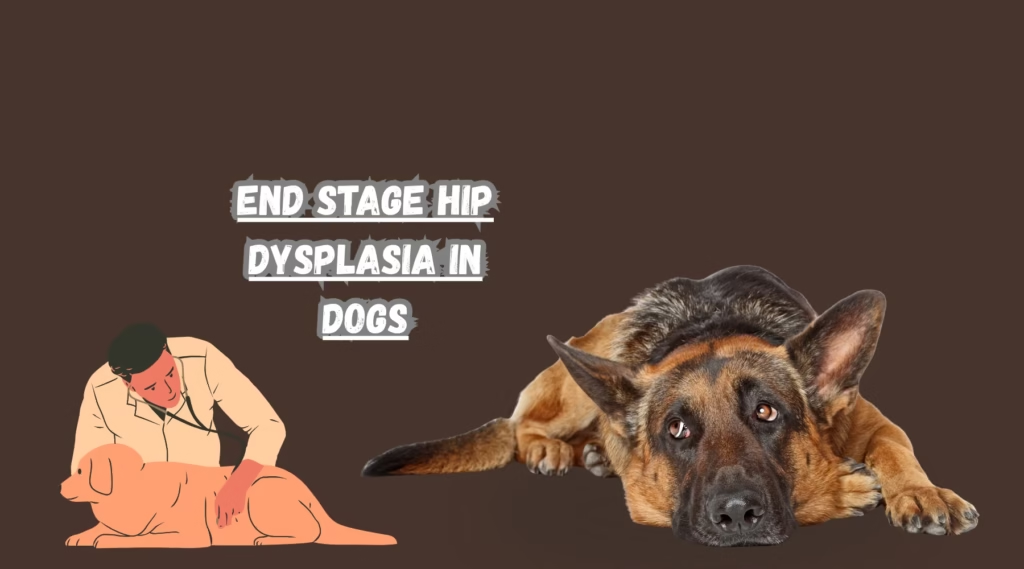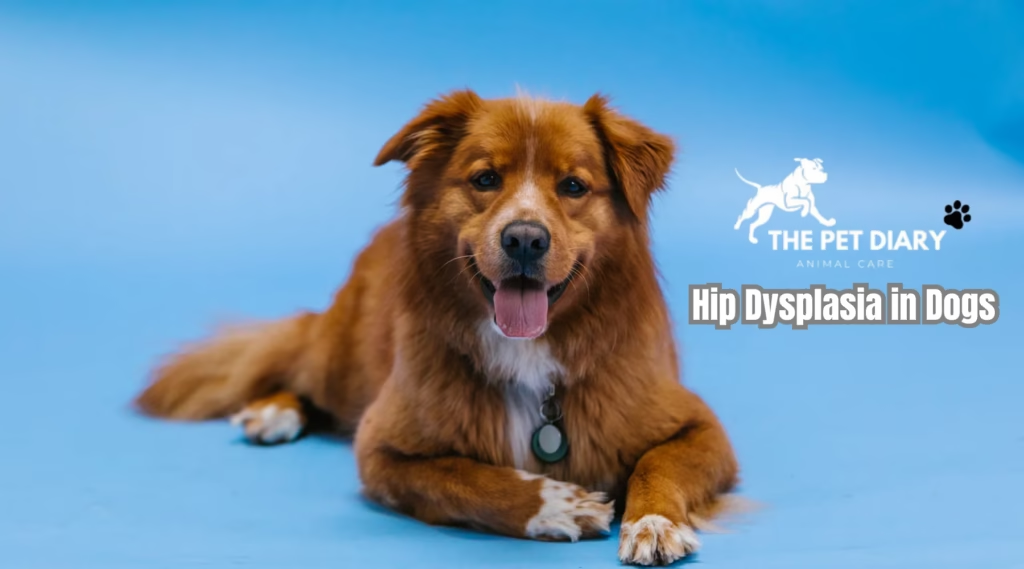Introduction
Hip dysplasia in dogs is one of the most common orthopedic conditions affecting pets worldwide.
This developmental disorder causes the ball and socket joint of the hip to form incorrectly, leading to looseness, pain, and eventually arthritis.
While genetics are the primary cause, diet, weight, and lifestyle also influence whether a dog will suffer from this painful condition.
Learning to recognize hip dysplasia signs and symptoms in dogs, understanding risk factors, and following prevention strategies can help owners protect their companions from years of discomfort.
This article offers an in-depth look at early warning signs, at-risk breeds, prevention tips, and the latest management options, everything you need to keep your dog comfortable and active.
Understanding Hip Dysplasia in Dogs

Dog hip dysplasia occurs when the head of the femur (the “ball”) does not fit properly into the pelvic socket (the “cup”).
Instead of a smooth, stable glide, the joint moves loosely and unevenly. Over time, this instability causes:
-
Erosion of cartilage
-
Chronic inflammation
-
Bone remodeling and painful arthritis
Although any dog can develop the disorder, it’s most frequently diagnosed in medium to large breeds. Early diagnosis is critical because lifestyle changes, supplements for hip dysplasia in dogs, and timely veterinary treatment can slow or even halt progression.
Genetics and Environment
-
Genetic predisposition is the strongest factor. If a puppy’s parents had poor hip conformation, the puppy is at higher risk.
-
Growth rate and nutrition also matter. Rapid weight gain or excessive calories can stress soft joints during puppyhood.
-
Exercise plays a role: repeated jumping or high-impact play in young dogs may damage cartilage and supporting ligaments.
Responsible breeders reduce risk by screening breeding dogs using OFA or PennHIP certifications and breeding only those with excellent hip scores.
Breeds at Higher Risk
Some breeds have a particularly high incidence of hip dysplasia in dogs because of their size, build, or breeding history. While no breed is immune, owners of these dogs should be especially watchful:
Golden Retriever
Beloved for their friendly nature, Golden Retrievers are unfortunately prone to joint disorders. Maintaining a healthy weight, offering low-impact exercise, and choosing a reputable breeder can significantly lower the odds of developing alsatian hip dysplasia.
Mini Golden Retriever
The Mini Golden Retriever, a cross between a Golden Retriever and smaller breeds like the Cavalier King Charles Spaniel, often inherits Golden genetics for joint structure. Even with their smaller size, they may display what are the first signs of hip dysplasia in dogs, such as reluctance to climb stairs or subtle limping.
German Shepherd
Known for athleticism and working ability, the German Shepherd is also well documented for hip joint issues.
Because they grow rapidly during the first year, careful diet management and appropriate exercise are vital to help prevent hip dysplasia in dogs of this breed.
Other At-Risk Breeds
-
Labrador Retriever
-
Rottweiler
-
Saint Bernard
-
Great Dane
-
Bernese Mountain Dog
Owners of these breeds should be proactive about early screening and preventative care.
Pro Tip: If you’re purchasing a puppy, request written hip-health certifications from both parents. This single step can dramatically lower the risk of future problems.
Hip Dysplasia Signs and Symptoms in Dogs

Early detection is key to successful management. Because hip dysplasia progresses gradually, signs can be easy to overlook at first.
Early Symptoms
-
Occasional limping or stiffness, especially after play
-
A “bunny-hopping” gait when running
-
Reduced enthusiasm for long walks
-
Subtle discomfort when rising from a lying position
Progressive or Moderate Symptoms
-
Noticeable weakness in the hind legs
-
Difficulty climbing stairs or jumping onto furniture
-
Audible clicking or popping sounds from the hips
-
Hesitation to play or exercise
Advanced Symptoms
-
Persistent pain even during rest
-
Severe lameness and muscle wasting in the hindquarters
-
Behavior changes such as irritability or withdrawal, due to chronic discomfort
Early vs. Advanced Symptoms of Hip Dysplasia in Dogs
| Stage | Common Signs & Behaviors |
|---|---|
| Early | Mild limp, subtle stiffness, reluctance to run long distances |
| Moderate | Difficulty standing, audible hip “clicks,” decreased activity |
| Advanced | Severe pain, muscle loss, and inability to climb stairs |
What Are the First Signs of Hip Dysplasia in Dogs
The first signs are usually subtle and can be mistaken for ordinary fatigue:
-
Reluctance to climb stairs: A dog may pause or seek alternative routes.
-
Slight limping after vigorous play: Often resolves after rest but recurs.
-
Unusual sitting posture: Dogs may “lazy sit” with legs splayed outward.
Observant owners who notice these early signals and consult a veterinarian can start interventions such as weight management, best supplements for hip dysplasia in dogs, or low-impact exercise before severe arthritis develops.
Causes and Risk Factors of Hip Dysplasia in Dogs
Although genetics is the primary driver, several environmental and lifestyle factors can make the difference between a healthy hip joint and a painful one.
Genetic Predisposition
If either parent suffers from hip dysplasia, puppies inherit a higher risk.
This is why reputable breeders screen dogs before breeding and only mate animals with certified hip scores.
Exercise Patterns
While regular movement keeps joints healthy, excessive high-impact exercise like repetitive jumping or running on hard surfaces can damage cartilage in young dogs.
Controlled activities such as swimming or walking on grass are safer options.
Weight Management
Obesity places additional stress on the hips, accelerating cartilage breakdown.
Keeping dogs lean is one of the simplest ways to prevent hip dysplasia in dogs or slow its progression.
How to Prevent Hip Dysplasia in Dogs
You can’t change genetics, but you can lower the chances of severe joint disease.
Balanced Nutrition
Feed a high-quality large-breed puppy formula to control growth speed.
Your vet can recommend precise calorie needs to avoid overfeeding.
Appropriate Exercise
Low-impact activities like swimming or gentle hiking keep joints strong without trauma.
Avoid intense Frisbee sessions or repeated stair climbs, especially for young breeds like the Mini Golden Retriever, Golden Retriever, or German Shepherd.
Early Screening
Consider X-rays or PennHIP evaluations at 4–6 months of age, especially for at-risk breeds.
Early detection allows lifestyle changes and veterinary interventions that may prevent end-stage disease.
Supplements for Hip Dysplasia in Dogs
Nutritional support can protect cartilage, reduce inflammation, and relieve pain.
Key Ingredients
-
Glucosamine and Chondroitin: Rebuild and protect cartilage.
-
Omega-3 Fatty Acids: Powerful anti-inflammatories found in fish oil.
-
MSM (Methylsulfonylmethane): Enhances joint flexibility and reduces stiffness.
-
Turmeric/Curcumin: Natural anti-inflammatory properties.
How Supplements Help
These compounds slow cartilage breakdown and improve joint lubrication, which can delay the need for surgical intervention.
Best Supplements for Hip Dysplasia in Dogs
| Supplement Name | Key Ingredients | Primary Benefits |
|---|---|---|
| FlexiPup Plus | Glucosamine, MSM | Maintains cartilage, supports mobility |
| OmegaBoost Chews | Fish Oil, Vitamin E | Reduces inflammation and promotes joint fluid health |
| Joint Guard Pro | Chondroitin, Collagen | Aids cartilage regeneration and eases stiffness |
| Golden Hip Care | Turmeric, Omega-3 | Natural anti-inflammatory blend for at-risk breeds |
Tip: Always consult your veterinarian before adding a supplement to ensure correct dosing and compatibility with other treatments.
How to Treat Hip Dysplasia in Dogs
Treatment depends on severity and age.
Many dogs benefit from a combination of medical management, physical therapy, and, in advanced cases, surgery.
Weight Management
Keeping a dog at an ideal weight is the most effective non-surgical dog hip dysplasia treatment.
Even a 5–10% weight loss can dramatically decrease pain.
Physical Therapy
Hydrotherapy (underwater treadmill) or guided stretching strengthens muscles and supports joints without high-impact stress.
Medications
Veterinarians may prescribe:
-
Non-steroidal anti-inflammatory drugs (NSAIDs) are used to reduce pain and inflammation
-
Joint-protective injections such as polysulfated glycosaminoglycans
Brace for Hip Dysplasia in Dogs
A well-fitted hip dysplasia in dogs brace can:
-
Stabilize the hip joint
-
Reduce pain
-
Improve mobility in mild to moderate cases
Braces are especially helpful for senior dogs or those who aren’t candidates for surgery.
Living with a Dog Diagnosed with Hip Dysplasia in Dogs
A diagnosis of hip dysplasia can feel overwhelming, but with the right management, you can help your dog live a happy, active life.
Creating a Joint-Friendly Home
-
Supportive bedding: Provide orthopedic or memory-foam beds to cushion joints.
-
Non-slip flooring: Use rugs or mats to prevent slipping, which strains hips.
-
Ramps and steps: Replace steep stairs with gentle ramps so your dog can access favorite spots without pain.
Daily Exercise Plan for Dog Hip Dysplasia Home Treatment
Low-impact activities such as leisurely walks or swimming keep muscles strong without stressing joints.
Short, frequent walks (10–15 minutes, 2–3 times a day) are more comfortable than one long outing.
End Stage Hip Dysplasia in Dogs
When the disease reaches its final stage, cartilage is severely worn, and the joint may become deformed.

Common Signs of End Stage
-
Constant lameness, even after rest
-
Severe pain despite medication
-
Muscle wasting in the hindquarters
-
Reluctance to rise or walk
Palliative Care Options
-
Stronger pain-relief medications under veterinary supervision
-
Advanced physical therapy techniques such as laser therapy or acupuncture
-
Mobility aids, including wheelchairs or a custom brace for hip dysplasia in dogs, to help with balance and movement
Quality of Life Assessment
Veterinarians often use scoring systems to evaluate whether your dog is still enjoying daily activities.
These assessments help families decide when compassionate end-of-life care may be the most loving option.
FAQs
What Does Hip Dysplasia Look Like in Dogs?
Dogs may sway their hind end while walking, show a “bunny-hop” gait, or struggle to rise after rest.
How Long Can a Dog Live with Hip Dysplasia?
With proper management—weight control, supplements, and veterinary care, many dogs live full lifespans.
Is Surgery Always Required?
No. Many dogs respond well to a combination of physical therapy, anti-inflammatory medication, and the use of a hip dysplasia in dogs brace.
What Is the Recovery Time After Hip Surgery?
Recovery varies by procedure:
-
Femoral Head Ostectomy (FHO): 4–6 weeks of restricted activity
-
Triple Pelvic Osteotomy (TPO): 6–8 weeks
-
Total Hip Replacement: Up to 12 weeks with gradual return to normal activity


